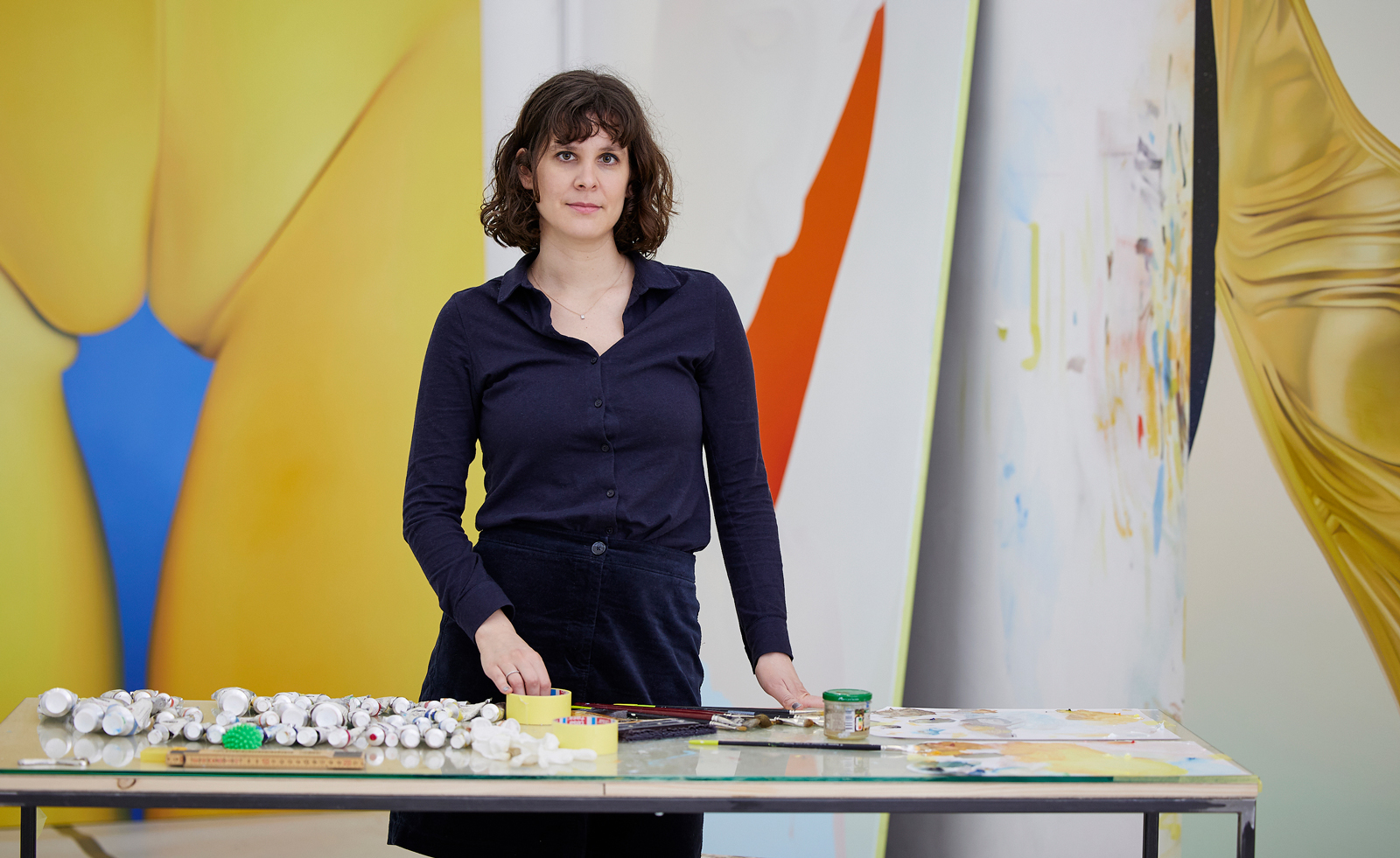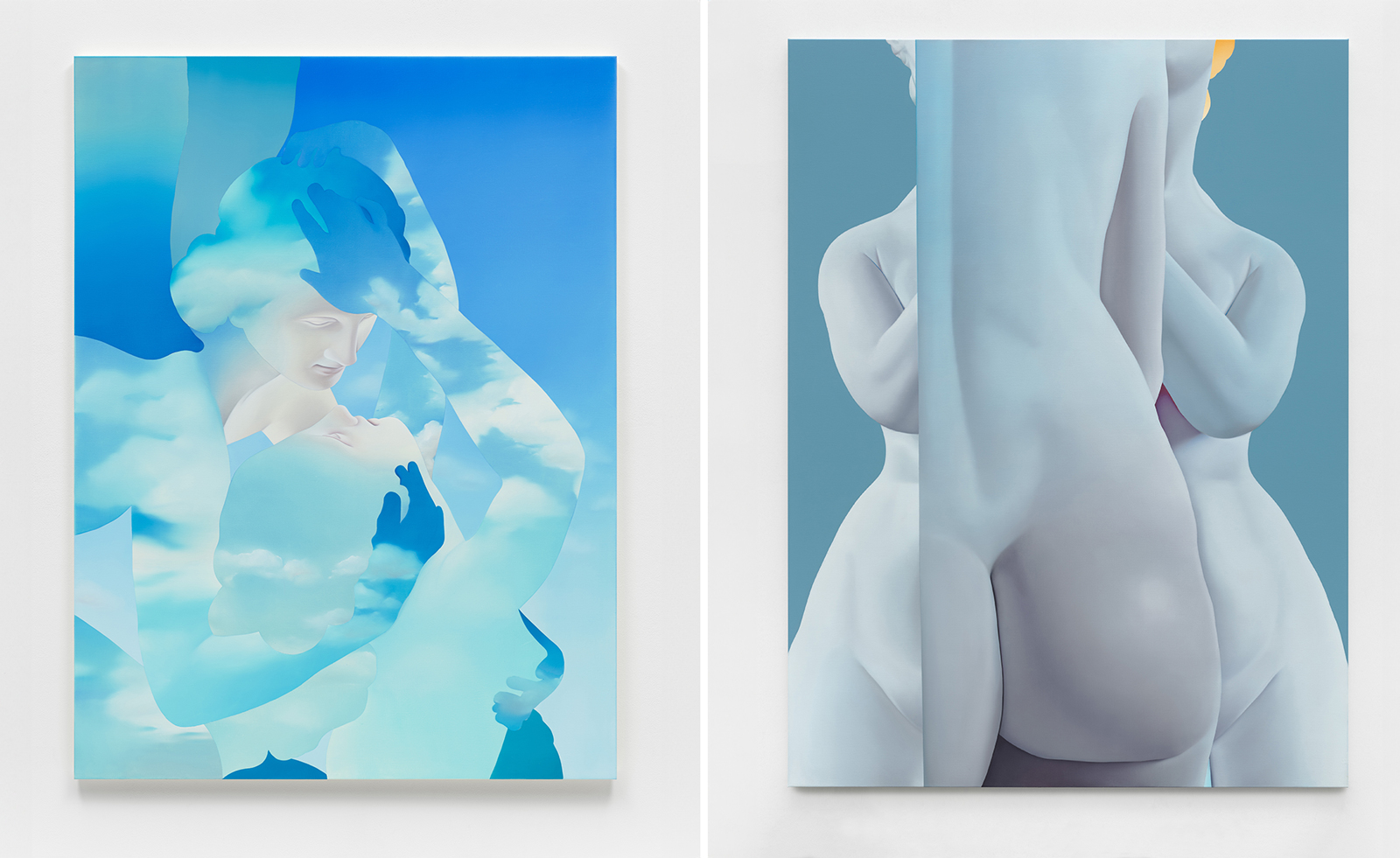
What does it mean to live in a world organised by the cosmos? A world structured not by humans, not by machines, but by natural forces? Through a distinct painterly style blending technical precision with the layered effects of peering into digital screens, artist Vivian Greven addresses questions like these and more. She dives into Greco-Roman art history to mine the depths of and myths surrounding ancient sculptures; to mirror our existence on a cosmological scale; to reimagine what it means to occupy a body – and this world – today.
‘I’ve always been very concerned about the membrane of the skin: the surface and the connection to the volume and the body underneath it,’ the artist says when we meet at her studio in Dusseldorf, Germany. ‘But suddenly I felt like I needed more air in the paintings, and I began thinking about the cosmos.’
Vivian Greven, ‘When the Sun Hits the Moon’ at Perrotin NYC
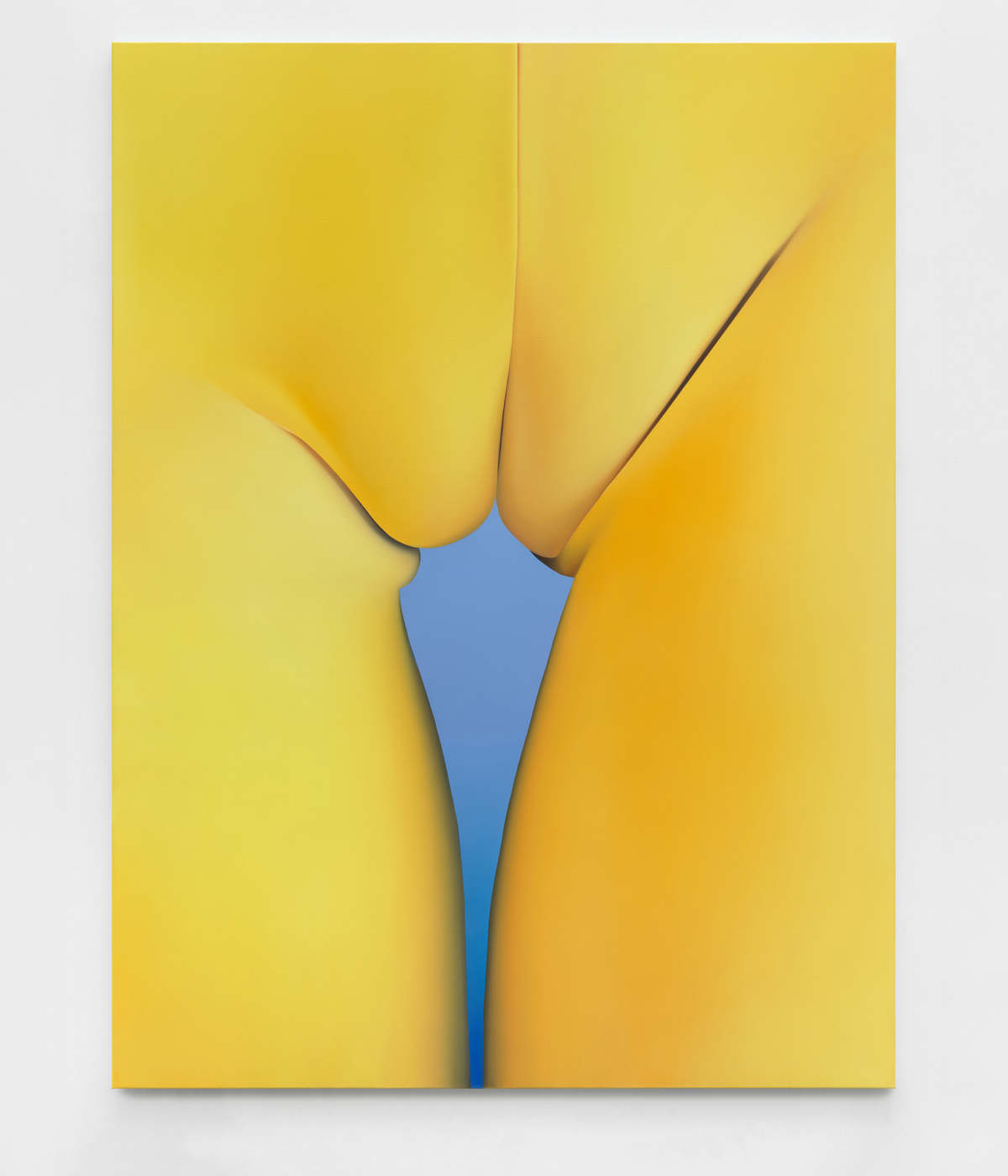
This recent thought led to the development of ten new paintings, which will be on view in ‘When the Sun Hits the Moon’, her debut exhibition with the gallery Perrotin in New York City, also marking her first solo exhibition in the United States.
When I visit, the soon-to-be-finished larger-than-life canvases are spread throughout the studio, leaning against all four towering walls of the former squash court. Each painting revisits a recognisable motif Greven has previously employed – the Roman goddess of Venus; cameltoes caused on female forms by tight garments; Antonio Canova’s iconic neoclassical 18th-century sculpture of Cupid and Psyche – while simultaneously introducing stark new developments, such as the bold use of the colour black.
To create her works, the artist scrolls through an ever-growing folder of inspirational images saved on her computer. Eventually, a certain image repeatedly captures her interest and ‘feels like it needs to be painted now’, she explains. Greven then reworks the source image on Photoshop, sometimes cropping it, sometimes mirroring or inverting it, or, more likely, carrying out a combination of these commands. When she’s happy with the digital composition, she draws it on a canvas and then painstakingly layers oil paint until her desired colour gradients and painted image emerge. With the process of drying between layers, one work might take six months to complete, with coloration playing a key role: in her works, ‘colour is not a representation of reality’, she explains, ‘it’s much more a representation of energy, emotion, and temperature’.
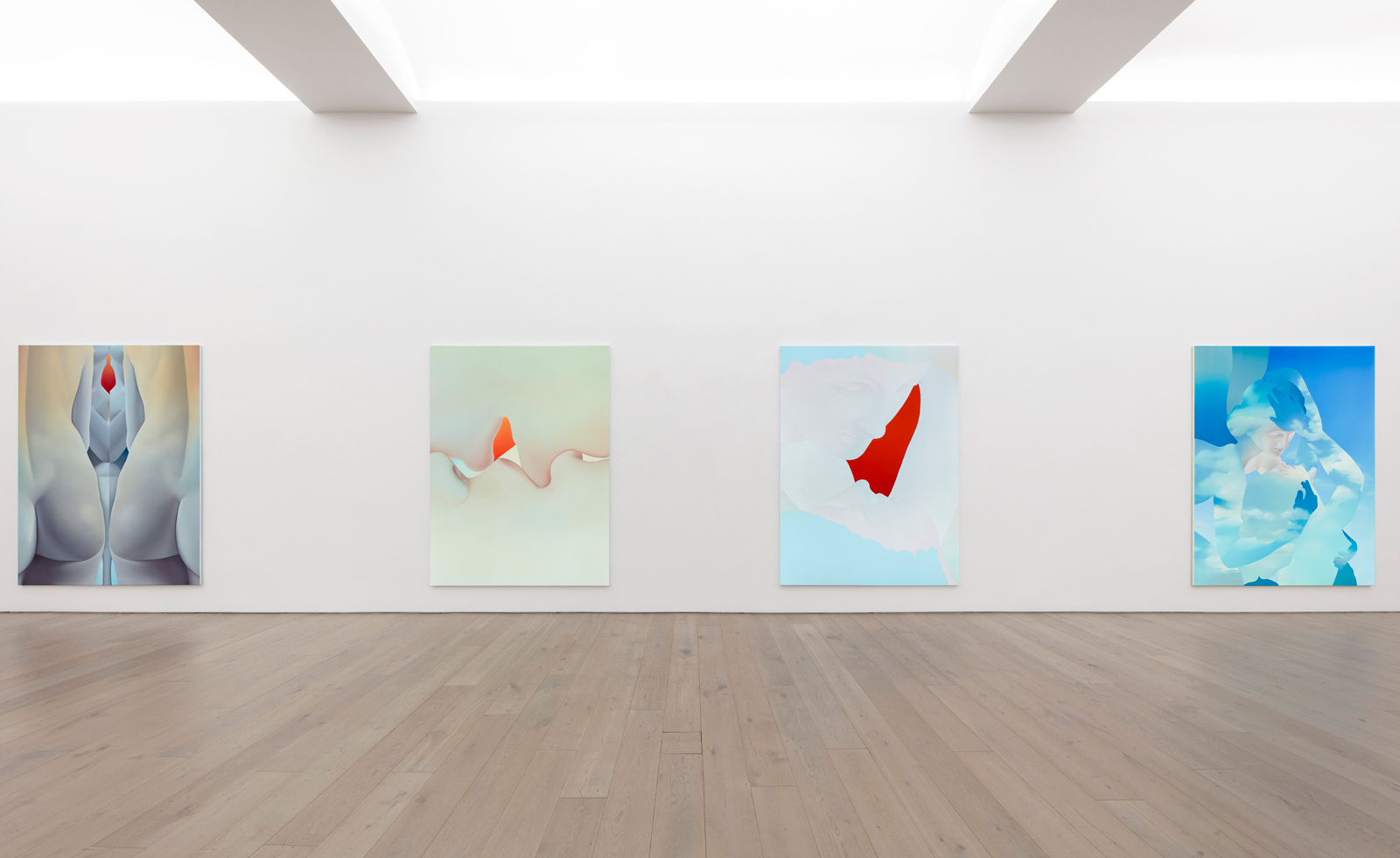
When viewing a work like Ae Tha (2024) or Wh Ole I (2024), I immediately think of digital avatars floating in space, be it in the metaverse or an enigmatic black hole. Without pupils and with shiny, flawless, marble-like skin, the humanoid figures in Greven’s paintings offer blank identities, ready to assume the viewer’s individual projections and ideas. ‘The figures are super sensitive, romantic, almost touching, almost kissing,’ she says, ‘but at the same time, they have no pupils, no breath, no warmth. This resembles the feeling of being disconnected, of not being in the body, of not really living,’ she continues. ‘People today, including myself, lose their lives on being busy. We survive a day, rather than being in the day, being present and feeling what’s going on. And when we’re in this survival mode, we are our own avatars.’
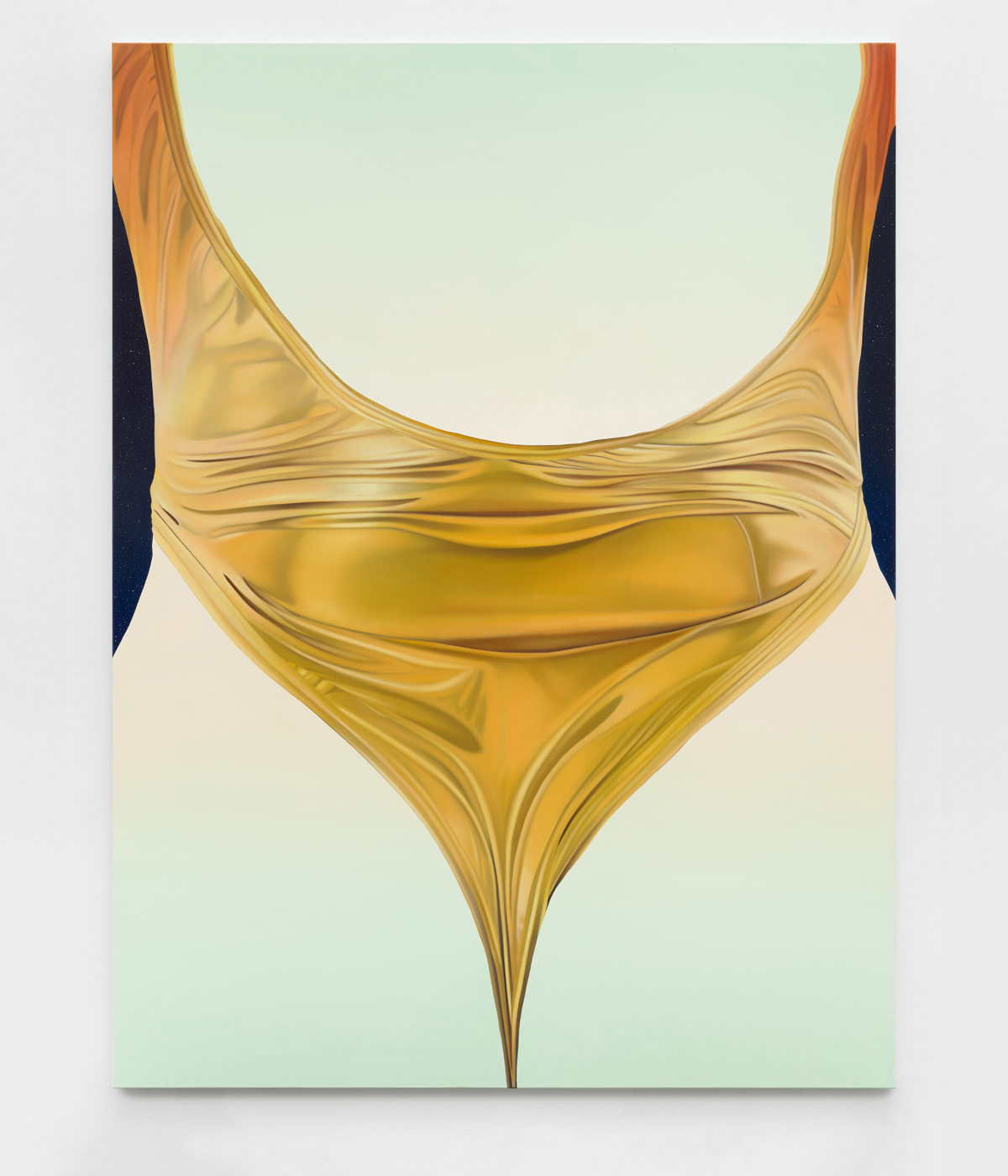
Amid today’s frenetic energies offline, online, and everywhere in between, Greven’s paintings offer a place of contemplative solace; a place to float among the (in)visible clouds. Specifically with the show at Perrotin, ‘all of the works are dealing with the question of what it means to become something else’, she explains. ‘It’s about changing gravity, about the feeling of a body that becomes body-less or becomes air. Figures,’ she continues, reflecting on our contemporary state of being, ‘are constantly dissolving into another state.’
‘When the Sun Hits the Moon,’ at Perrotin in New York City, runs 13 April – 23 May 2024
